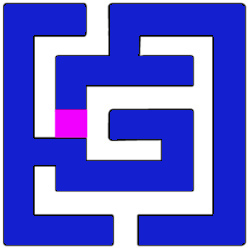Agentic AI Comparison:
ChemCrow vs PARAMUS
Introduction
This report compares two AI-powered chemistry agents: ChemCrow and PARAMUS. ChemCrow is an open-source package designed to solve reasoning-intensive chemical tasks using large language models and specialized tools. PARAMUS is a commercial AI platform for drug discovery that uses evolutionary algorithms guided by large language models.
Overview
ChemCrow
ChemCrow integrates large language models with 13 expert-designed chemistry tools to perform tasks across organic synthesis, drug discovery, and materials design. It aims to augment human chemists by automating complex reasoning and providing access to external knowledge sources.
PARAMUS
PARAMUS employs evolutionary algorithms guided by large language models to efficiently search chemical space for drug candidates. It redesigns traditional genetic operations like crossover and mutation using LLMs trained on chemical data to generate promising molecules.
Metrics Comparison
Autonomy
ChemCrow: 8
ChemCrow demonstrates high autonomy by integrating LLMs with specialized tools to perform complex chemical tasks with minimal human intervention. However, it still relies on human-provided prompts to initiate tasks.
PARAMUS: 9
PARAMUS shows very high autonomy in its ability to navigate chemical space and evolve drug candidates independently. Its evolutionary approach allows for continuous, self-guided exploration.
Both systems exhibit high autonomy, but PARAMUS edges out slightly due to its self-guided evolutionary approach.
Ease of use
ChemCrow: 7
ChemCrow is open-source and can be installed via pip, making it accessible to users with basic programming knowledge. However, it requires setting up API keys and potentially Docker images for full functionality.
PARAMUS: 8
As a commercial platform, PARAMUS likely offers a more polished user interface and streamlined setup process. However, specific details about its interface are not publicly available.
PARAMUS is likely easier to use for non-technical users, while ChemCrow offers more flexibility for those comfortable with programming.
Flexibility
ChemCrow: 9
ChemCrow's open-source nature and modular design with 13 specialized tools allow for high flexibility. Users can modify or extend its capabilities to suit various chemical tasks.
PARAMUS: 7
PARAMUS offers flexibility within its evolutionary framework for drug discovery. However, as a commercial platform, it may have limitations on customization compared to open-source alternatives.
ChemCrow's open-source design provides greater flexibility for customization and extension compared to PARAMUS.
Cost
ChemCrow: 8
ChemCrow is open-source and free to use. However, it requires API keys for language models and some chemical databases, which may incur costs depending on usage.
PARAMUS: 5
As a commercial platform, PARAMUS likely involves significant licensing or subscription costs. However, specific pricing information is not publicly available.
ChemCrow is likely more cost-effective for academic or small-scale use, while PARAMUS may be more suitable for large organizations with dedicated budgets.
Popularity
ChemCrow: 7
ChemCrow has gained attention in the scientific community, with its paper receiving citations and media coverage. Its GitHub repository has over 500 stars, indicating growing interest.
PARAMUS: 6
PARAMUS is a newer platform and its popularity is difficult to assess due to limited public information. However, its innovative approach has attracted attention in the drug discovery field.
ChemCrow appears to have broader recognition in the academic community, while PARAMUS may have a more focused user base in the pharmaceutical industry.
Conclusions
Both ChemCrow and PARAMUS represent significant advancements in AI-powered chemistry tools, each with its own strengths. ChemCrow offers high flexibility and cost-effectiveness, making it attractive for researchers and small organizations. Its open-source nature allows for customization and extension. PARAMUS, on the other hand, provides a more streamlined, autonomous approach to drug discovery, potentially offering greater ease of use for non-technical users. The choice between the two would depend on specific needs, budget constraints, and the desired level of customization. For comprehensive chemical research, a combination of both tools could provide complementary capabilities.

